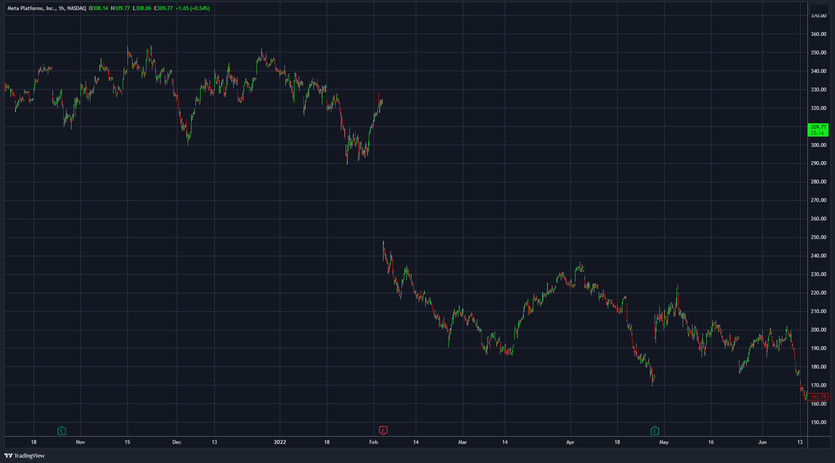"Catching a falling knife," an intriguing idiom in the world of investing, vividly captures a precarious scenario. Picture an investor who swoops in to purchase a stock following a substantial plunge in its price, wagering on an imminent rebound. However, the gamble can backfire if the stock persists in its downward trajectory, landing the investor with hefty losses.
Essential Takeaways: What You Need to Know
- The term "catching a falling knife" typifies the act of an investor swooping in on a stock that has recently suffered a significant price decline.
- Value investors often leverage this strategy, aiming to seize these tumbling stocks and retain them for an extended tenure, banking on their long-term performance.
- Scalpers, on the other hand, seek to make a swift profit before they promptly sell off the stock.
- Regardless of the strategy employed, traders must remain vigilant. They should avoid doubling down if the fundamental situation of the stock has significantly shifted.
The Mechanics: How 'Catching a Falling Knife' Functions in Investments
Investors aspiring to outwit the market often find themselves purchasing stocks on a downward spiral, banking on an anticipated rebound. Alas, more often than not, they are left nursing wounds akin to catching a slipping kitchen knife.
A multitude of factors can cause stocks to fall. Often, the so-called 'falling knives' are stocks that are oversold due to a knee-jerk reaction to unfavorable recent news or disappointing earnings reports. These price drops often do not align with the health of the underlying business.
Unveiling the Catalysts: What Triggers a Stock Price Dip
Adverse news can instigate a chain reaction, causing shareholders to offload stocks, subsequently driving prices downwards. This, in turn, can create a snowball effect, with the dwindling price inciting further selling, thereby amplifying losses.
- Notably, many investors employ stop losses, a type of trade that automatically triggers the sale of shares once a certain price point is breached.
- The selling pressure during a stock price decline can intensify due to these automated trades.
- Short sellers can capitalize on falling stock prices. As the price dips, they can procure the stock at a lower rate and meet their selling obligations, pocketing the difference.
- In such scenarios, the sheer number of sellers can rapidly outstrip the count of buyers, precipitating a sharp and unexpected tumble in the stock prices.
Riding the Waves: Strategies for Navigating Falling Stock Prices
When faced with stocks experiencing a persistent dip in prices, investors generally resort to two key strategies: contrarian value investing and scalp trading.
- Contrarian Value Investing: These investors view short-term market weaknesses as golden opportunities to buy, with the intention of holding for the long term.
- Scalp Trading or Swing Trading: These investors aim for a quick profit from a potential short-term rebound.
The core principle in both strategies is to sidestep the falling knife and catch a bouncing ball — a stock poised for an imminent rebound.
Delving Deeper: Understanding Contrarian Value Investing
Contrarian value investing is a fundamental strategy where investors calculate a stock's intrinsic value, only opting to buy when it trades significantly lower. They see falling knives as opportunities, assuming the underlying business fundamentals remain robust. Over time, as these stocks revert to their intrinsic values, these investors stand to profit.
Joe Koster, a managing member and investment adviser for Sorfis Investments, emphasizes that value investors can add considerable value to their portfolios by "skillfully catching falling knives". However, he also warns that incorrect valuations can exacerbate losses, while accurate ones can minimize risk and augment returns by purchasing fundamentally sound stocks at lower prices.
Zooming In: Understanding Scalp Trading
Scalp trading, a strategy that aims for quick profits from overbought or oversold stocks, involves swift buying and selling. Like their value investor counterparts, scalpers believe that market overreactions drive the stock price lower than justified. However, their focus rests on a faster profit turnaround.
Real-World Example: 'Catching a Falling Knife' in Practice
A notable example of a 'falling knife' situation in the stock market is the case of the social media giant, Meta Platforms Inc. (formerly Facebook, FB). On February 2, 2022, Meta unveiled in their quarterly report an unanticipated slowdown in user growth numbers, which triggered serious worries about the company's future expansion. Meta's share price, which closed at $327.82 on February 2, took a severe hit, opening at $244.65 on February 3 — a sharp 25% drop in a single day.

Investors and traders who dared to catch this falling knife found themselves facing substantial losses as Meta's share price slipped further, dipping below $200/share by the end of February 2022. As of July 2023, despite a mild recovery, Meta shares were still trailing around the $220/share range, significantly below their pre-drop level.
This vivid case demonstrates the risks inherent in attempting to catch a falling knife in the stock market, underscoring the importance of comprehensive analysis and cautious decision-making when dealing with swiftly falling stocks.
The Implications: What Does This Mean for Individual Investors?
The primary rule for individual investors is to resist the temptation to time the market. If the market's prediction about a stock proves accurate, catching a falling knife will invariably result in severe losses. However, if a falling knife turns out to be a bouncing ball, it holds the potential for significant returns.
How does the market prompt investors to catch a falling knife?
The market can lure investors into this trap by overreacting to short-term news. If the stock price collapses due to news that doesn't materially impact the business's economics, investors might be tempted to buy, expecting a price recovery. However, if the selling pressure continues and the price fails to rebound, investors can be left nursing losses.
How can one sidestep catching a falling knife in stocks?
Individual investors should avoid attempting to time the market or make investing decisions based solely on stock price movements. Holding onto stocks for the long term can help absorb short-term losses. Research by Charles Schwab indicates that since the 1960s, the average bull market, where stock markets are up more than 20%, lasted six years, delivering a cumulative 200% return. Bear markets, characterized by a drop of 20% or more, lasted only 15 months on average, with a cumulative negative return of a little over 38%.





